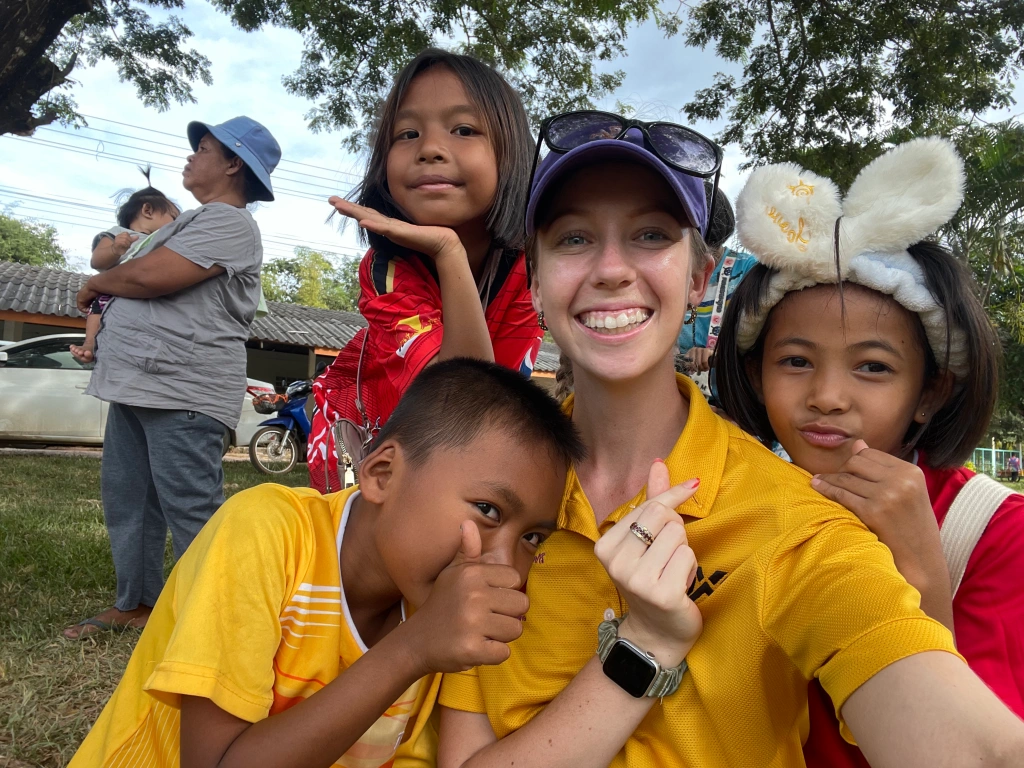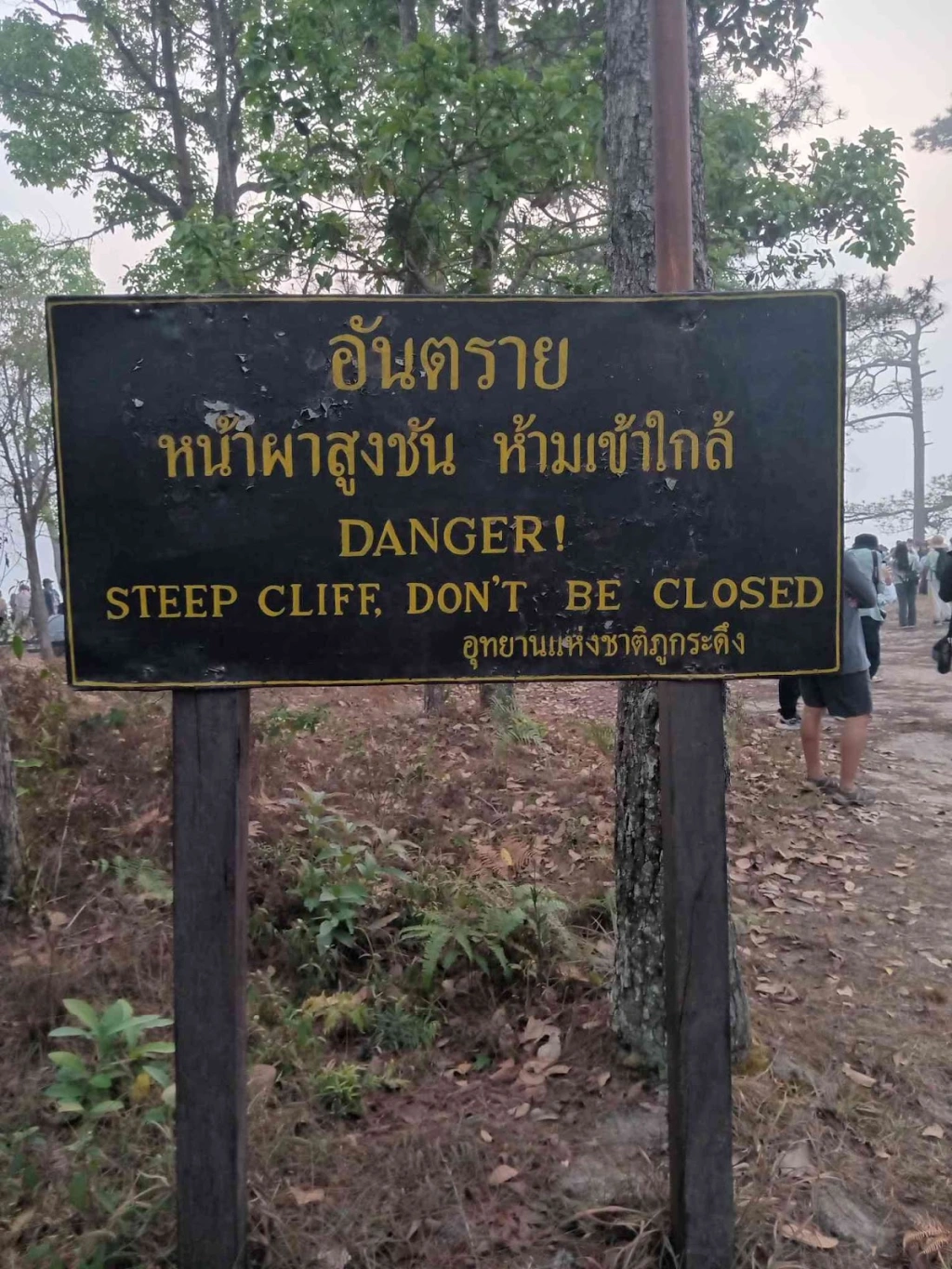Madeleine Aggeler, 126
A lot of people get off the plane in Thailand and their pants immediately fall to the floor because they’ve miraculously lost 30 lbs. This did not happen to me. I spent most of my breaks during training seeing how many banana chips I could fit in my mouth at one time, and chugging 3 in 1 “coffees” (sugar packets).
By the time I got to site, I was 10 lbs heavier, and had a lot of free time on my hands, so I began researching “eating plans” (fad diets). I had dabbled before. I was a vegan for a week in college until I got drunk and decimated a fried chicken sandwich, and in high school my parents and I did South Beach, and said things like “Wow, I never knew 12 almonds could be so filling!” Diets for me were never as much about weight loss or health benefits as much as they were about having something to talk about ad nauseam and lord over others. Saying things like “Oh, I don’t eat meat,” and “I’m not hungry,” made me feel impossibly sophisticated and dainty.
A couple of things first: diets are stupid. They can be dangerous, and are almost always ineffective. I know this. I am also a woman who tries to conform to societal norms of beauty, which are rigid, narrow, and unrealistic. This is also stupid. Nobody should feel pressured to be something other than exactly what they are at this moment. I also know that. But after a few weeks at site surrounded by Thai people who are much, much smaller than you, you start to question everything. Now that we’ve acknowledged these things, back to my diets.
The South Beach Diet
South Beach was the first diet I tried, because as I mentioned, I had tried it before. For those of you unfamiliar with the program, it is divided into three stages: the first stage is two weeks long, and aims for rapid weight loss by cutting out all carbs (including fruit), the second phase gradually reintroduces some carbs, and is to be continued until you reach your goal weight, and the third phase is theoretically the rest of your healthy, balanced, low-carb life. The National Health Service reports that phase 1 “can cause bad breath, a dry mouth, tiredness, dizziness, insomnia, nausea, and constipation,” which, coincidentally, is also my Tinder bio.
Are you falling asleep yet? Cool. That’s a better response than my fellow teachers had because to Thai people, eliminating carbs is f**king insane. I didn’t eat that much rice when I first got to site, which already drove people crazy, so when I also  stopped eating fruit they just about lost it.
stopped eating fruit they just about lost it.
“What can you eat?” they asked, when I told them about the diet.
“A lot!” I assured them, which was a lie.
I have a great market compared to a lot of volunteers, but eliminating all the food that contained carbs or sugar left me with few options. I ate a lot of eggs, chicken, and beans. Since I am a terrible cook, these were generally flavorless and/or burnt. This didn’t matter at the time though, because just knowing that I was on a diet gave me a sort of Stockholm Syndrome that made me feel like my South Beach captors were benevolently nourishing me. It also didn’t matter because I was too faint with hunger most of the time to care what the food tasted like.
Reincorporating fruits in phase 2 helped a little bit. A week into phase 2 I said screw it and bought a bunch of donuts.
Outcome: I lost a little bit of weight, but who cares because you’re just wearing ill-fitting polos at site anyway. On the bright side, it was a constant source of conversation at the lunch table.
The 5:2 Diet
Exploring the dark bowels of the internet one day, I stumbled upon the concept of intermittent fasting. The basic premise is that because our homo sapien forefathers went through long periods where they had nothing to eat, our bodies are
programmed to deal with periods of fasting. I watched a documentary online that showed an 873 year-old Indian man who fasted and was still running marathons and according to doctors had the strength and stamina of a young stallion (I don’t remember all the details.) I hoped to never run a marathon, but I do like anything that compares me to a caveman, so I found the 5:2 diet.
The 5:2 diet stipulates that on two non-consecutive days you limit your caloric intake to 500 calories. In addition to weight loss, it promises improved focus and mental capacity.
Here’s the jarring thing about eliminating two of your three meals and all of your twelve snacks: so much of one’s day revolves around meals – thinking about them, buying the materials, preparing them, eating them – that when you don’t have lunch and dinner, you suddenly have all of this extra time on your hands. This might be refreshing to people with busy schedules, but for a Peace Corps Volunteer who struggles to find ways to fill her days as it is, it was kind of a drag.
Here’s the other thing: YOU’RE SO HUNGRY. Whoever said hunger heightens your senses was a liar. Hunger fills my head with a fog of rage. I’ve never understood those people who are like “Oh wow! I was so busy that I forgot to eat lunch today.” I never miss a meal because the second I get a little bit peckish I start screaming and flipping tables.

The five days I was allowed to eat I spent in anxious anticipation of my upcoming hunger. I lasted a month.
Outcome: WHO CARES. YOU’RE SO HUNGRY.
So there you go. If you’re looking for ways to get fit during your service, it’s probably best to stick to eating healthy food and staying active, though you probably knew that already. And I do too. But you know, if you find any other fad diets I can get into and complain about, let me know. Maybe I’ll try Gwyneth Paltrow’s diet next.




Share your thoughts